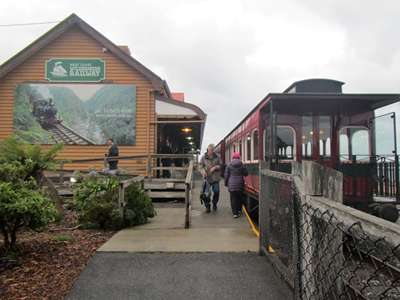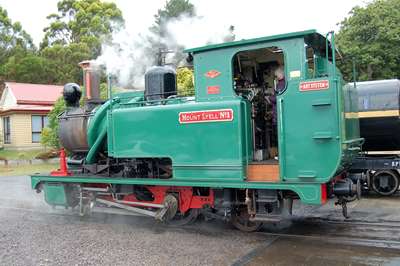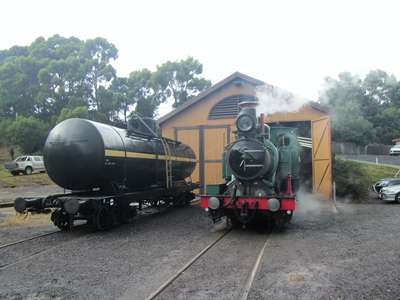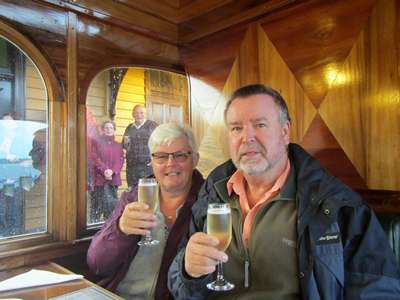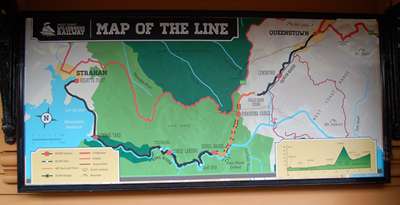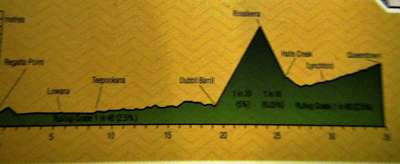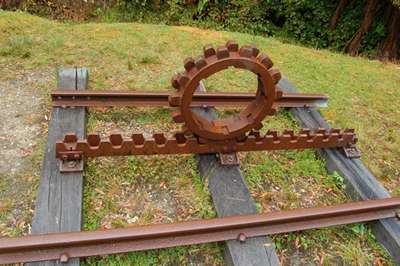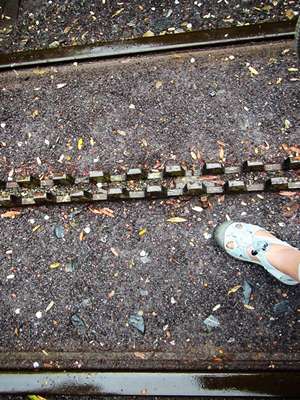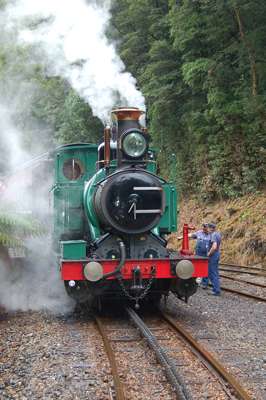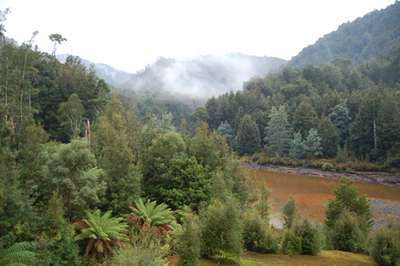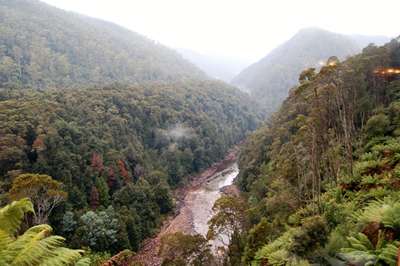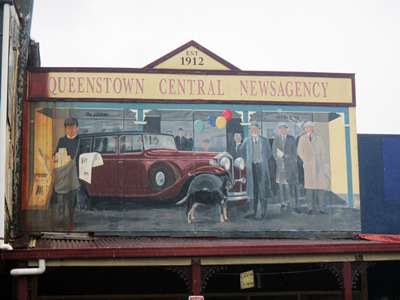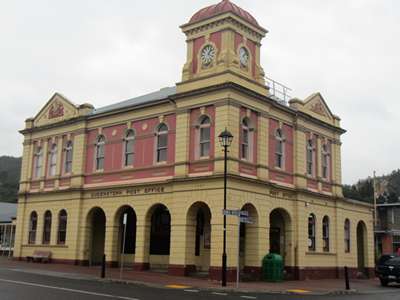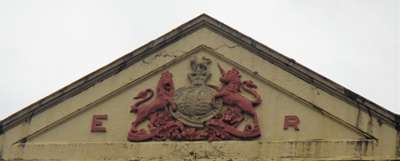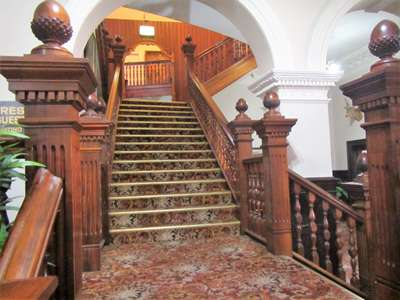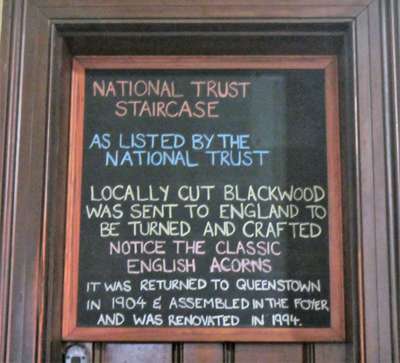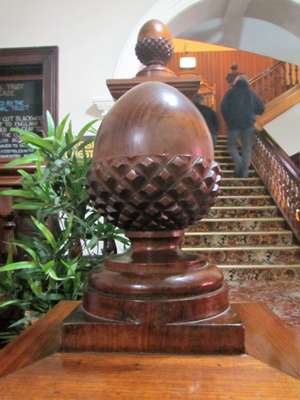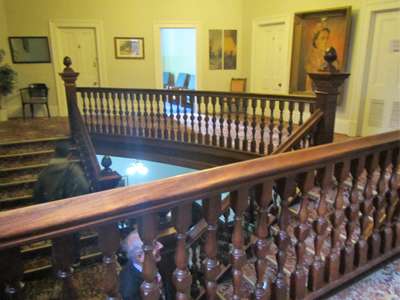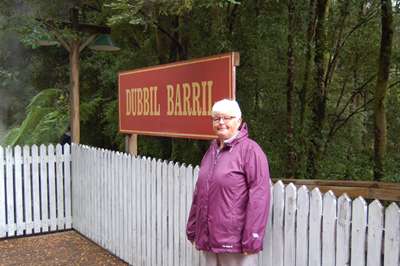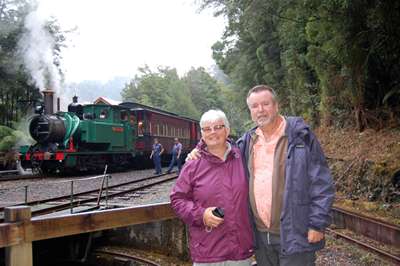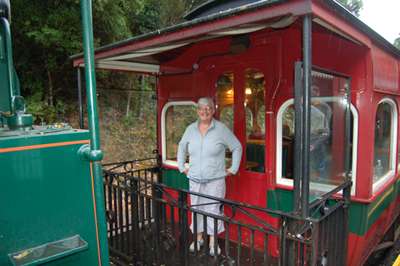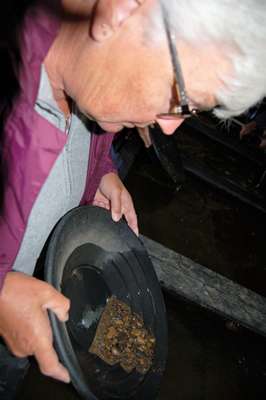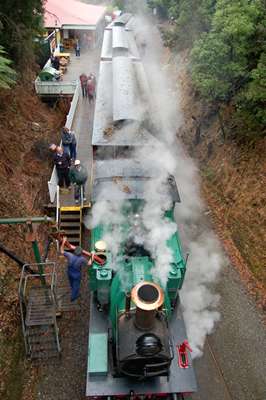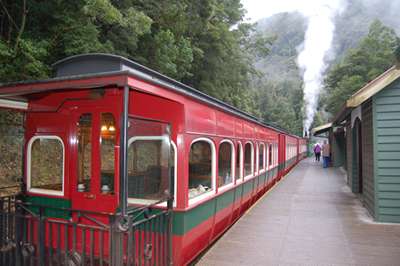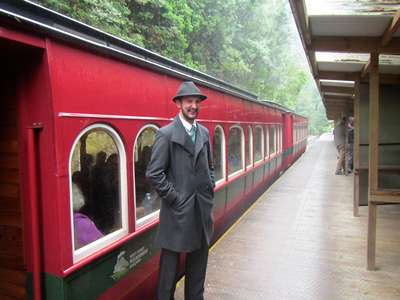West Coast Wilderness Railway

|
Monday 15th February 2016 When we woke this morning we were a little dismayed to find
that the grey skies that had threatened rain yesterday had kept their promise
and were indeed dumping fairly persistent rain in sufficient quantity to dissuade
us from going out. Today, however, was not a day to slip back under the
duvet. Today was the day of our long-awaited trip on the West Coast
Wilderness Railway, and no amount of rain would make us miss that! We had
seats booked in the balcony carriage of the Queenstown Explorer, and there were
glasses of bubbles waiting for us to arrive and drink them. So off we
went. A short car trip brought us to the station, where the
carriages awaited coupling to Mount Lyell No. 1 engine which had just been
brought out of its shed and was building up a head of steam ready to
move. Time for a quick photo before boarding our carriage and claiming
our glasses of fizz. The day was looking up already!
The carriages wait in place at the station. Time
to pose by No.1 engine.
Building up a head of steam outside the shed.
The identification plates on the engine show it was built
in Glasgow in 1896. The No.1 was the first engine to steam into
Queenstown in 1896 and also to pull the last train before the railway closed
in 1963. It was rebuilt in Queenstown in 2010.
Settled in our carriage and ready to go. Cheers! Our trip today would take us from Strahan through several
stations to Queenstown, where we would stop for lunch and a wander around the
town before the return trip to Strahan.
The route we would take to Queenstown and back. This
chart shows how high and steep the train will climb. The railway is a reconstruction of the Mount Lyell Mining
and Railway Company line which began operating in the late 1890’s.
It was built to transport copper from the mines at Queenstown. During the
trip we were told about the difficulties of clearing the forest to lay the line
over very difficult terrain, with construction workers living in primitive camp
conditions which, given the heavy annual rainfall of the area, were often
mudbaths. Bridges had to be built, but the most challenging problem were
the steep inclines, up to 1 in 15, that the railway had to overcome. The Mount Lyell Company bought a rack and pinion system
recently developed in Switzerland by Roman Abt, the main advantage of which was
that as well as allowing the engine to climb the steep inclines pulling loads
of copper, it also had a simple system to get the engine on and off the rack
and pinion system before and after the steep sections.
A model of the rack and pinion system beside the track. The
actual rack in position between the rails.
The engine preparing for the climb at the beginning of the rack and pinion section of the line. It was an interesting and sometimes slightly scary journey through
the forest, around the edges of hills where the land seemed to fall away below
us, and crossing bridges originally built over a hundred years ago. The
scenery was breathtaking, in spite of the rain, and the King River Gorge was
spectacular. Rather than spoiling the day, the rain enhanced the experience,
highlighting the hundreds of shades of green in the foliage and really giving a
feel for the conditions in which the railway construction workers lived and
worked.
Dense foliage in hundreds of shades of green. Tannins
in the water cause the reddish brown colours.
Crossing the King River Gorge. We arrived at Queenstown in time for a hot lunch which was
ready for us at the station. We then joined a guided walk of some of the
town’s historical buildings and learnt a little more about the history of
this old mining town.
Mural above a shop in the main street. A
very grand Post Office building.
The then unofficial kangaroo and emu coat of arms of
Australia on one side and the British coat of arms on the other.
Blackwood staircase in the Empire Hotel opposite the
station.
“Classic English acorn.” All that wood
shipped to England for turning and crafting before being shipped all the way
back again!
A 1981 photo of the hills around Queenstown, on show at
the hotel. The return trip was every bit as interesting, stopping to do
some gold-panning and to wander around a museum of the railway along the
way. No nuggets of gold for us, but we had the most wonderful day seeing
parts of the west coast we could not otherwise have seen.
Interesting name for a town! Waiting
for the other train to pass.
The viewing platform of our carriage. Panning
for gold - without luck.
Taking on water. One
of the stations along the way – a comfort stop – no loos on the
train!
Our host and commentator for the day. |
